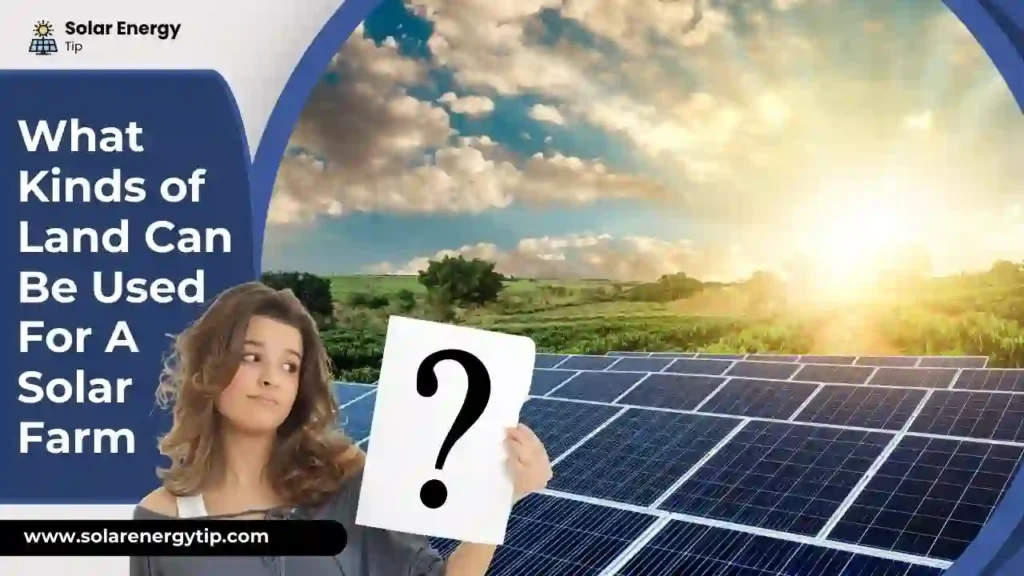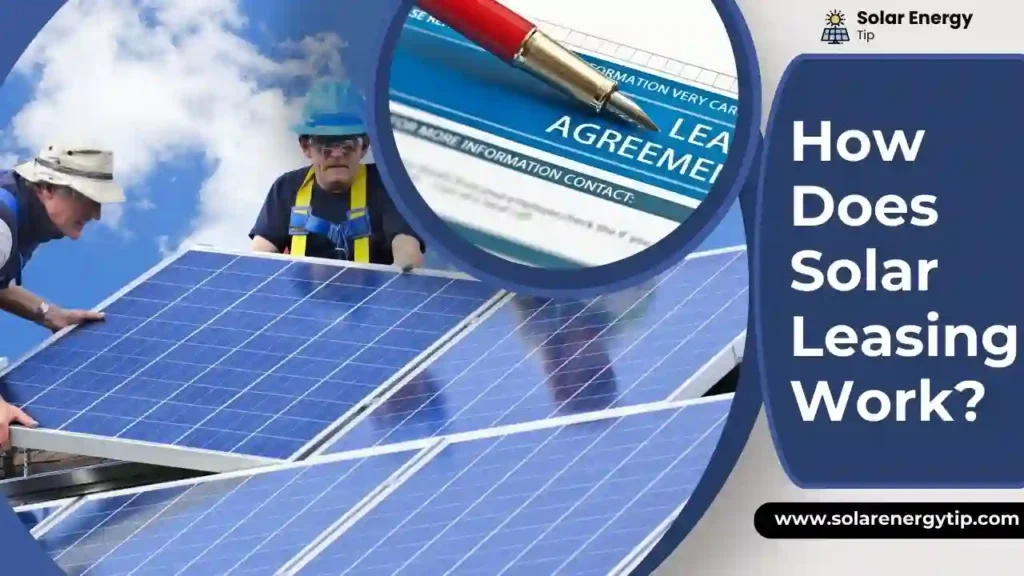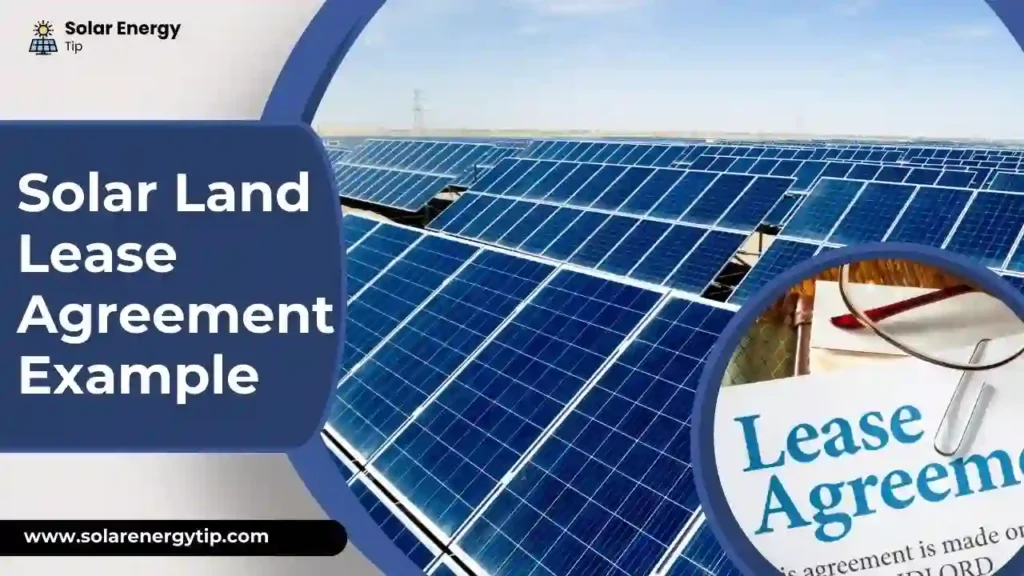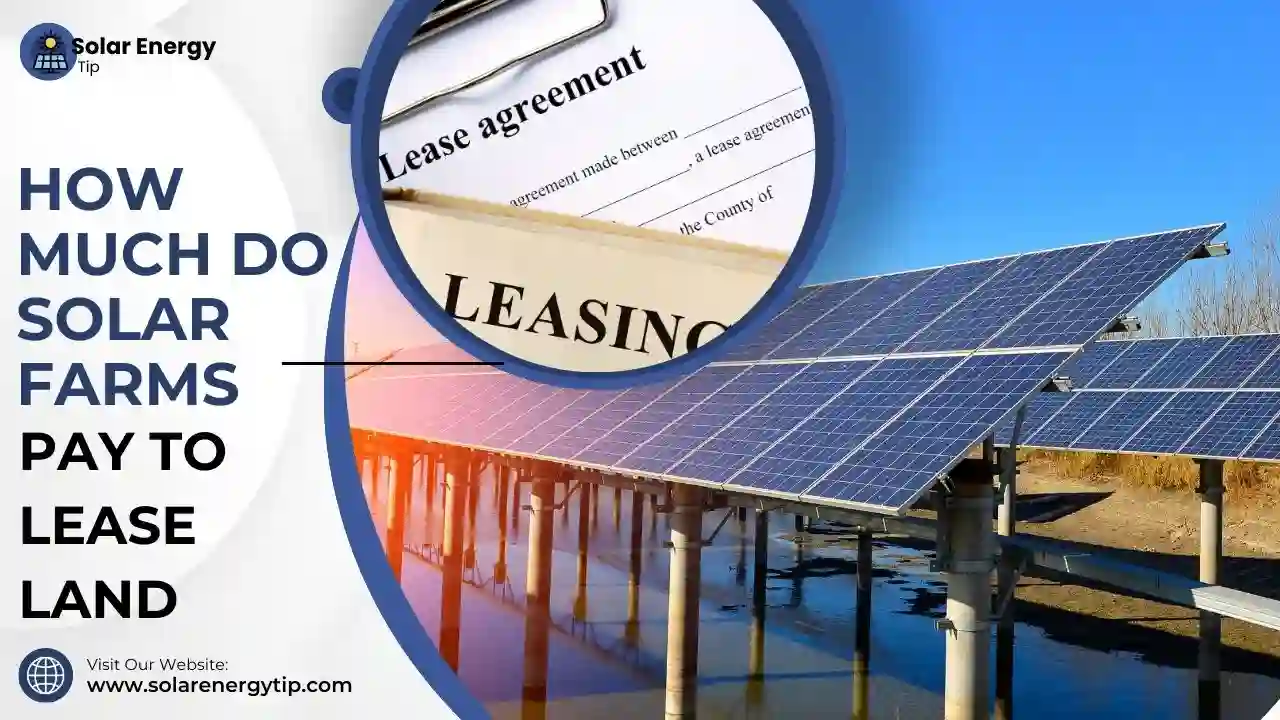Solar farms are a popular option for those who have landed in the USA.
If you have land and you want to build solar farms on your land, then a question in your mind is how much do solar farms pay to lease land?
One of the key factors in the development of solar farms is the leasing of land. Solar farm developers lease land from landowners to build and operate solar farms.
In this blog post, 👉 we will explore the pay for solar farms to lease land and also learn about the current rates for leasing land to solar farms.
Understanding the factors influencing solar farm land lease rates is important for landowners, developers, and policymakers alike.
- What Is A Solar Farm?
- How Much Do Solar Farms Pay To Lease Land? 💲 Details Guide
- Steps to Lease Land for Solar Farm Development
- What Kinds of Land Can Be Used For A Solar Farm?
- Why You Should Lease Your Land to a Solar Developer
- How Does Solar Leasing Work?
- Solar Land Lease Agreement Example
- Solar Land Lease Companies
- Is My Land Suitable for a Solar Farm?
- How Much Does It Cost To Use Different Types of Land For A Solar Farm?
- FAQs
- Conclusion
What Is A Solar Farm?
A solar farm is a large-scale photovoltaic system that produces electricity from the sun’s rays.
They are becoming increasingly popular as a source of renewable energy.
It is typically composed of solar panels, made up of photovoltaic cells, and connected to an inverter.
Solar farms can range in size from a few to hundreds of acres, and they are often located in areas with high levels of sunlight, 🌞 such as deserts or coastal regions.
In addition, solar farms help reduce carbon emissions, as they do not produce any emissions when generating electricity.
Solar farms can supply power to homes, businesses, and public institutions, making them essential to a sustainable energy system.
So, Landowners can earn money by leasing their land to solar farm developers.
Read More: In Georgia Solar farm Start guide.
How Much Do Solar Farms Pay To Lease Land? 💲 Details Guide
If you own a large plot of land and are considering leasing it out for solar farm development.
Then, it’s important to understand the current rates.
Leasing land for a solar farm is an increasingly popular option for landowners, with advantages like increased property value, a steady income stream, and a reduced environmental impact.
Generally, the answer depends on a variety of factors.
- Location
- Size of the solar farm
- Electricity demand in the area
- Local regulations and taxes
- Competition among solar farm developers
Smaller solar farms are typically more expensive per acre, while larger solar farms can often offer more competitive rates.
On average, landowners can earn between $500 – $3000 per acre per year, depending on the size and location of the solar farm.
Location is also important, as prime areas may be able to command higher lease prices. 💰
However, renewable energy companies often provide other incentives to landowners, such as tax credits or additional payments for land improvements that can help offset costs.
Ultimately, lease prices vary greatly and may range from a few hundred dollars to several thousand per acre per year.
Potential solar farm lessees should also consider other factors, like
As of 2024, it is projected that solar farm leasing rates will continue to increase due to the growing demand for solar energy and the declining cost of solar panel technology.
However, the exact rates will vary depending on the specific market and region.
Solar farm leasing rates are negotiated between developers and landowners and should be reviewed by professionals and legal advisors for fairness.
Solar Farm Land Lease Rates
Landowners need to stay informed on how much solar farms pay to lease land to negotiate a fair price.
Renting rural land for solar energy can be profitable but is complicated due to the wide range of data and US markets. Rental rates vary from $500-$3000 per acre per year.
Solar land leases typically involve fixed rental rates per acre, as solar energy production is predictable and consistent.
Royalty structures are more common in upstream oil & gas leases.
Utility-scale solar leases typically have 15-50-year terms with annual rent escalation near estimates of future inflation (1.5-2.5%).
Rent amounts vary based on project size, land values, and regional supply/demand.
Rates Per Acre Around the U.S.A
Rent for small solar sites in rural North Carolina or California is typically over $1,000/acre. In comparison, larger tracts for major power plant projects can range from $500 to $1200/acre, depending on the region.
In California’s Central Valley, large tracts often reach $1,000/acre.
When negotiating with a solar development company, aim for a fair deal that benefits both parties, not put either party at a disadvantage.
The family with the highest rent may get nothing in large projects as the developer builds on other properties.
If you have a contract providing above-market rental rates, it decreases the chance of the developer selling the power and reduces the likelihood of solar revenue.
Read More: Estimate solar farm profit per acre guide
Steps to Lease Land for Solar Farm Development
You need a developer to start a land lease for solar farm income.
👉 Creating a leasing agreement involves
👉 Developers: You may have been contacted or need to identify a local solar farm leaser. To discover a developer with lease conditions you like, talk to many.
👉 Site visit: Developers inspect your land before leasing it for solar farms. This information helps them assess whether your land is suitable and set leasing conditions.
👉 Pre-lease agreement: There are two types.
- Leasing. This outlines the leasing arrangement but gives the developer time to determine whether to proceed and how much land to lease. Developers compensate landowners.
- A pre-lease Notice of Intent.
Finally, lease property for solar farm development. Sign the lease with the developer.
What Kinds of Land Can Be Used For A Solar Farm?

Solar farms can be built on various land types, ranging from residential backyards to large agricultural fields.
The most important factor when considering land for a solar farm is the amount of sunlight 🌞 the area receives.
If the area receives enough sunlight, it can be suitable for a solar farm. When looking for land for a solar farm, it’s important to consider the following factors…
Additionally, it is important to consider the accessibility of the land, as well as regulations that may be in place to prevent construction in certain areas.
Residential backyards are ideal for small-scale solar panel installations, while larger-scale solar farms may require larger pieces of land, such as agricultural fields or prairie land.
Regardless of the type of land chosen, it is important to ensure that the solar farm is taking advantage of the most efficient energy production and minimizing environmental impacts.
Solar panels require a lot of areas, but not all land is suitable. Solar farms work best on the following land:
Local legislation, environmental effects, and installation and maintenance costs determine a solar farm’s appropriateness.
Before installing a solar farm, the land must be assessed.
With careful planning and consideration, any land can be used for a solar farm.
Why You Should Lease Your Land to a Solar Developer
Landowners interested in the renewable energy revolution are leasing their land to solar developers.
Solar energy reduces carbon emissions and energy prices. You may help create a sustainable future by leasing your land to a solar developer.
Leasing your land can protect the environment 🌳 and generate passive cash.💲
Leasing your land to a solar developer might earn hundreds to thousands of dollars annually, depending on its size and location.
Location-based tax benefits are also available. Solar developers usually give all the documentation and instructions needed to lease your site.
To benefit from the renewable energy revolution, lease your land to a solar developer today.
Here is a video to see what is on when you start a solar farm based on leasing land which things you should know.
The benefits of leasing your land to a solar developer include the following:
Leasing your land to a solar developer can generate a steady income while encouraging sustainable energy and environmental protection.
Therefore, be sure the leasing agreement fulfils your needs as a landowner.
Find out how much solar farms pay to lease land to determine the potential financial benefits.
How Does Solar Leasing Work?

Let’s see how a solar farm works.
Solar farms pay what for land? Due to the value of solar energy, the amount is easy to calculate. Let’s compare the cost and annual return of a solar panel set:
Example: Expense = $0.90 Yearly Payment = $404.92
These figures are based on solar panel costs, not revenues. As one solar panel lasts ten years, the set should pay for itself in 10 years.
Mathematical models are used to calculate several things. The panels’ 10-year electrical output is incredible.
Small plots pay the same annually. Solar panel income increases with the land.
What do solar businesses pay for land leased for solar farms?
Depends, Solar panel output determines it. You’ll be paid a minimum to maintain the farm while they use it.
Pros and Cons of Leasing Land for Solar Panels
Pros
Cons
Solar Land Lease Agreement Example

A solar land lease agreement allows a solar energy business to install and operate a solar energy system on a landowner’s property.
The solar energy provider pays the landowner for the usage of the property under a rental agreement.
Such an agreement may cover the lease period, payment amounts, party rights and responsibilities, maintenance, insurance, and termination.
To defend their interests, both parties should engage a renewable energy attorney.
With a well-crafted agreement, both parties may be assured that their rights have been handled and the contract is legally binding.
An Example of an Agreement
An example of a solar farm land lease agreement typically includes details such as the lease term, rental rate, payment schedule, property access, maintenance responsibilities, and dispute resolution.
The terms and payments vary depending on the negotiated agreement.
This adds to the information on how much solar farms pay to lease land.
📑 PDF File
📑 Docs File
Solar Land Lease Companies
Here, I know some solar land lease companies
- SolarCity
- SunRun
- Sungevity
- Vivint Solar
Is My Land Suitable for a Solar Farm?
Here are periodic tips to consider if your land is eligible for a solar farm:
- Check the solar resource: Sunny locations support solar farms. Online solar maps or calculators can estimate your land’s average daily sun exposure. Over 4 kWh/m2/day is good.
- Assess the topography: Flat or gradually sloping property is best for solar panels. Avoid steep slopes and uneven terrain that impede construction.
- Evaluate access: The area needs roads and transmission lines to reach the grid. Ideal location near power lines and substations.
- Check zoning laws and regulations: Check sure the land is zoned for utility-scale solar and meets local environmental and building standards. Many agricultural or industrial zones operate.
- Test soil stability: Testing soil stability affects subterranean wiring and foundations. Flooded or loose soil is dangerous.
How Much Does It Cost To Use Different Types of Land For A Solar Farm?
Leasing land for a solar farm can be a source of extra income. However, the amount varies depending on the land and location.
But how much do solar farms pay to lease land?
For example,
California agricultural landowners can expect $500 to $2,500 per acre per year from solar farms.
However, some Nevada solar farms cost $2,000 per acre to lease desert terrain.
Commercial and industrial sites can host solar arrays.
These leases are usually shorter than agricultural or desert leases. Solar farm size may affect lease term.
Finally, if your property is in a densely populated area with significant energy demands, you may receive higher compensation than in most other areas.
In some circumstances, you can make $30,000 per acre.
Lease payments from solar farms rely on numerous things.
Before signing any contracts, research potential solar farm companies, as there are many scammers.
FAQs
Why do solar farms need to lease land?
Solar farms rent property to install panels and generate power. Photovoltaic farms are solar. Solar farms only work in vast, sunny areas.
Solar farm developers can lease land instead of buying it, saving money. if you want to know how much solar farms pay to lease land? Then, read the above article.
How is the price for leasing land for a solar farm determined?
Solar farm leases depend on several factors. Location, size, and market conditions are factors. The lease period and solar farm developer incentives to the landowner may also affect the final pricing.
Can landowners negotiate the lease price for a solar farm?
Landowners can negotiate prices for solar farm leases. However, the negotiation’s outcome would depend on factors like regional solar electricity demand, solar farm size, and lease duration. These considerations will affect the outcome.
What are the benefits of leasing land for a solar farm?
Leasing property for solar farms supports green energy and gives landowners a steady income.
Developers may offer landowners revenue-sharing agreements or discounted electricity. Revenue-sharing agreements and energy purchases are examples.
Conclusion
So, there you have it – our list of the top factors that determine how much solar farms pay to lease land.
US solar farms pay $500–$3,000 per acre for land leases.
The duration of the lease term can also affect the amount, with longer leases often costing more.
Solar farm developers may also offer landowners revenue-sharing agreements or subsidized energy.
Solar farms can help landowners generate green energy and diversify their income streams.

